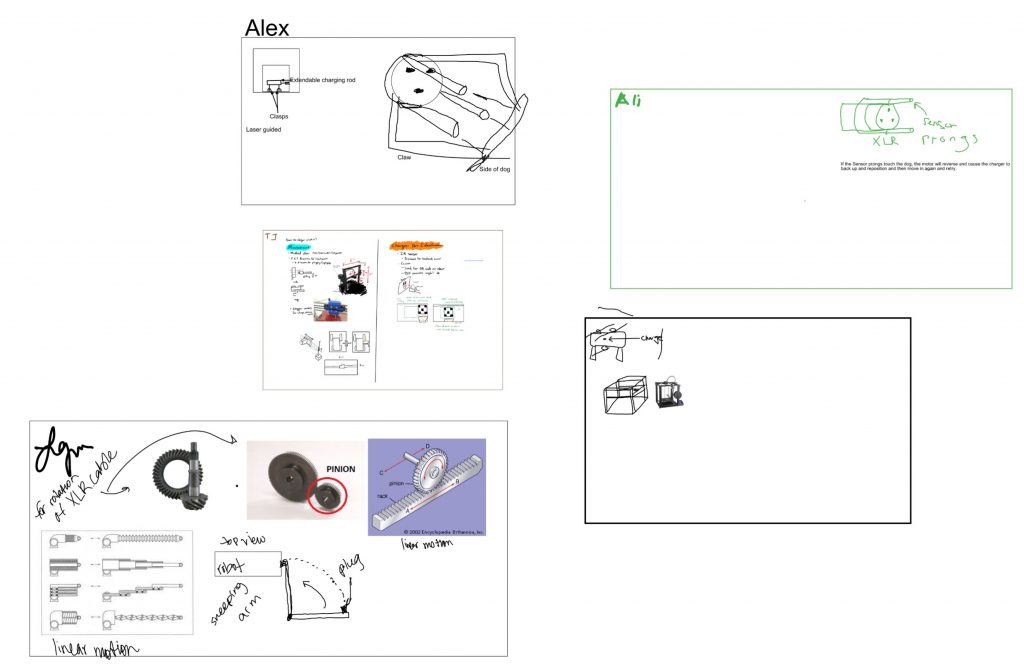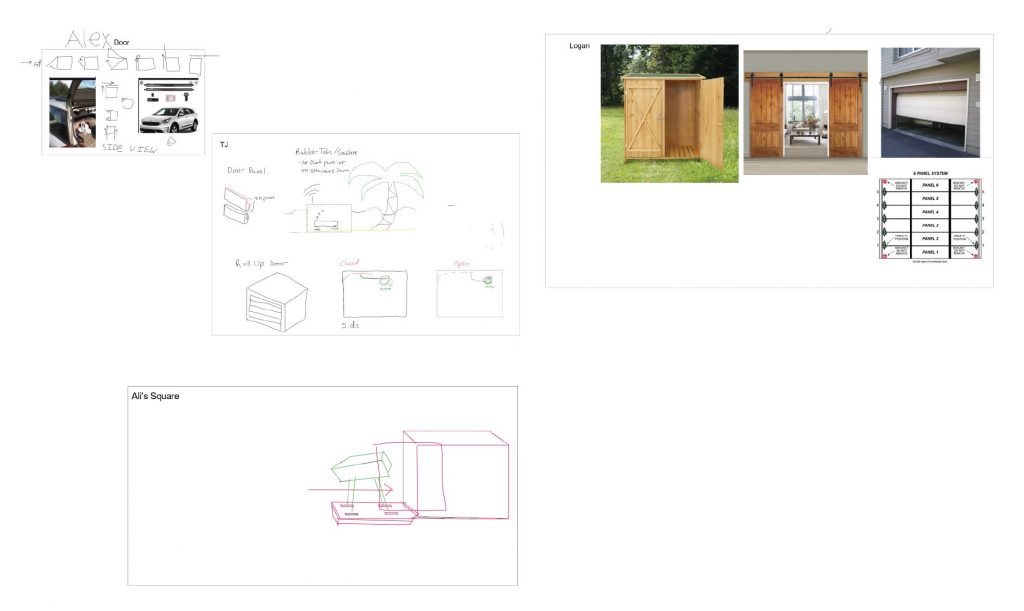Over the last few weeks, we’ve been taking what we developed from the brainstorming phase and creating concepts for our project. We used a virtual whiteboard to draw our concepts and had a lot of fun coming up with creative and innovative solutions. An interesting part of this experience was that a lot of team members built off of others’ ideas to create a new solution. Even though we come from different backgrounds and disciplines, we were able to work together on cohesive ideas.
Since our project has such a large scope, we had to categorize the system’s core functionalities into 3 main groups: Docking and Charging, Proximity Detection, Data Transfer, & the User Interface, and Structure and Door Type for concept selection. Grouping features like this made concept selection a lot more organized since our brainstorming session had so many ideas. After we generated concepts, we created criteria for each group to quantitively judge each concept. The top concepts were reported in the Preliminary Design Report and will be heavily researched and tested over the next few weeks.
This week we also had a peer review for our Preliminary Design Report presentation in front of the class. We did pretty well and got good feedback from other students and faculty. Most of our feedback was about the slides and how we describe the project so for the official PDR presentation next week with FPL, we’ll make these changes.
Moving forward, we’re going to start CAD for the three functionality groups based off of our conversations with FPL at the upcoming PDR meeting. With a 3D representation of our concepts, we’re hoping to gain a better understanding of their feasibility. Additionally, we’ll begin researching components to start designing the electrical architecture of the intelligent housing structure. Lastly, with the guidance of FPL, we will begin designing wireframes for the control UI now that the quadruped is on its way.
Although the first half of the semester has been heavily documentation-oriented, we are excited to start bringing our ideas to reality.

Collaborative whiteboard for charging concepts 
Collaborative whiteboard for structure type